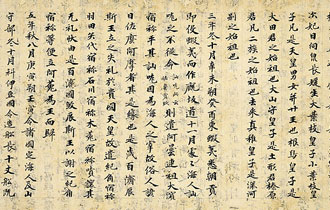Pages
|
Woodblock prints that date to the late Edo period, however, suggest that this form evolved upward over the centuries and was once a much lower, flat platform that better fit its original appellation of kōgetsudai, "moon-viewing platform". Thus, even in the case of sand, we must confront the "accidental," albeit this time actions due to human inconsistency or design.
Of the twelve buildings that originally comprised Ginkakuji, the Silver Pavilion itself and one other are the only two to have survived into the present. The pavilion has two floors. The second was used for moon-viewing on nights of a full moon, and the ground floor was used for meditation. The pavilion is not currently silver nor, according to scientific tests of its timbers, was it ever painted or gilded with silver leaf. So why was it named the Silver Pavilion? Some scholars suggest that plans were made to gild the building with silver, but never completed. However, historical records do not support this supposition. Other sources believe that the appellation came from the ocean of sand in front of the structure, which was found to have high mica content. Thus, when the sand ocean is bathed in moonlight, it turns into an ocean of glittering silver.
Karen M. Gerhart
Brenda G. Jordan
Pages
|











